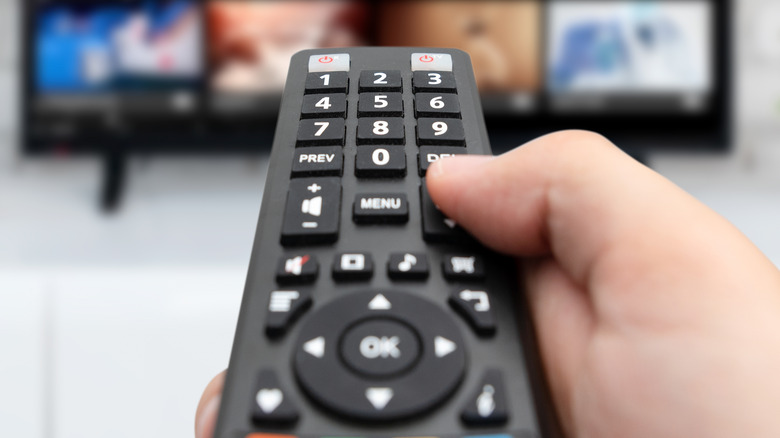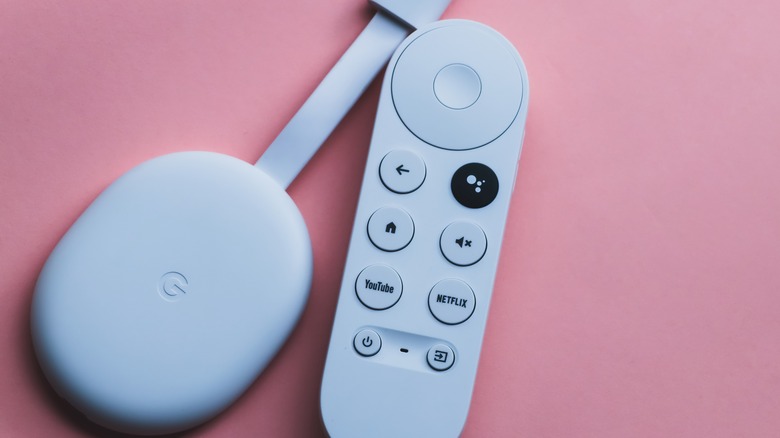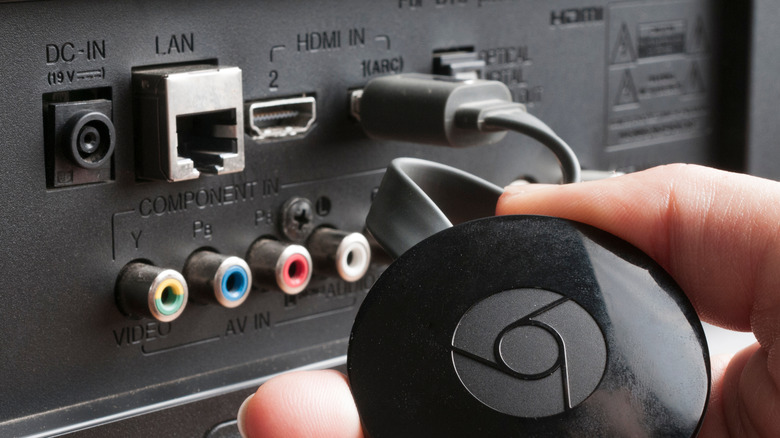How To Use Google Chromecast With Your TV Remote
Current models of the Google Chromecast streaming player come packaged with a handy remote control for quickly and easily commanding the device to show you all your favorite shows and movies. However, this remote is a relatively recent development; previous models of Chromecast didn't come bundled with a remote, requiring you to control the device through a connected computer or smartphone.
If you have an older Chromecast or bought an older one pre-owned, you don't have a remote to use, and the remote from the newer models isn't compatible with them anyway. So how are you supposed to control it, short of having your smartphone on you at all times? Sure, you can use voice controls, but consider this: you have a perfectly good TV remote on the coffee table. Why not just use that? Thanks to a setting in most modern TVs, you can get a Chromecast to accept command inputs from the TV's included remote.
Will your TV remote work?
As long as your TV was manufactured recently enough and doesn't already have streaming hardware loaded onto it, the remote that came bundled with it should work just fine as a Chromecast remote replacement. All you need is a confirm button to achieve the bare minimum of Chromecast control. You may not be able to do much more than pause and play a stream, but if you only care about watching stuff, a regular TV remote will do the job.
So what determines whether or not your TV can make this little technological trick happen? One word: HDMI-CEC. CEC stands for "Consumer Electronics Control." In this context, it refers to compatibility between an HDMI-equipped TV and a consumer-grade remote control. Any TV with this function can control devices with a stock remote, provided said device is plugged into an HDMI port and powered independently of the TV with a wall outlet.
Checking and enabling HDMI-CEC
Checking whether your TV has HDMI-CEC functionality is as simple as checking the TV's settings. It's usually off by default, but you shouldn't need special permissions to turn it on. Once enabled, you should be able to start using your remote to control HDMI-connected devices immediately.
However, there's a bit of a hitch here: almost every major TV manufacturer has their own name for this feature. We couldn't tell you why; maybe everyone wanted to have their own unique selling point. For example, Samsung refers to the feature as "Anynet+" on its TVs, while a Sony-made TV would mark it as either "BRAVIA Link" or "BRAVIA Sync." Check out Google's CEC support page for a list of other HDMI-CEC names by manufacturer. As long as you know your particular TV manufacturer's name for HDMI-CEC, you can hunt it down in the settings and enable it. If push comes to shove, try searching for your TV's brand name and HDMI-CEC.
What can you do with a TV remote on a Chromecast?
Unfortunately, while you can pause and play a video on a Chromecast with a stock TV remote, you can't do anything besides that. Even if your TV's remote has other buttons like a home button or selection buttons, only the pause and play functions are supported. For finer control over your Chromecast, you'll still need to use your phone or computer. The TV remote is mostly just for keeping within arm's reach of the couch in case you need a quick pause.
This lack of functionality is on the Chromecast's side rather than your TV's. HDMI-CEC support is supposed to offer you complete control with whatever remote you're using, but Chromecast only supports the pause and play commands for some reason. Maybe someday, Google will expand that support to include other essential functions like navigation, but until then, you'll have to settle for the bare minimum.



